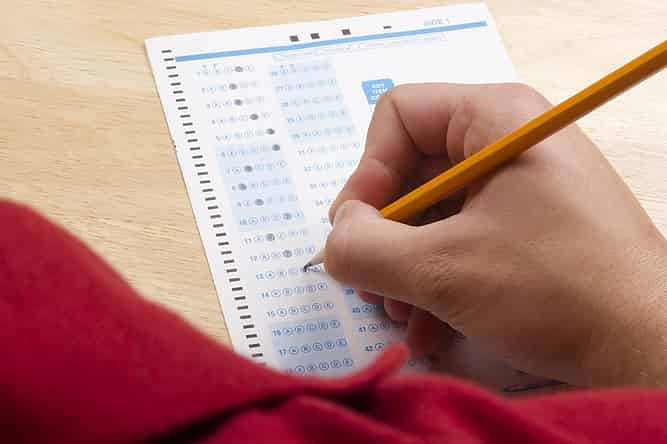Tips to Ace the SAT and ACT: Develop an Effective Test-Taking Strategy

By Joey, IvyWise Master Tutor
High school students should think about preparing for the SAT or ACT starting their sophomore year. Even as more U.S. colleges and universities go test-optional, SAT and ACT scores remain a key part of the admissions process for many applicants. A perfect standardized test score isn’t a golden ticket to a best-fit college. However, your test score is one of many components that admissions officers consider, so it’s in a student’s best interest to perform well.
To achieve their highest potential, test takers should begin preparations early and plan on sitting for the exam of their choosing more than once over a period of months. By understanding the role that the SAT and ACT play in the wider admissions process, students and parents can create an effective test prep strategy.
Start Early With Diagnostics
As with anything in college admissions, starting early is crucial. Standardized tests are marathons, not sprints. Taking the time to determine which exam is best for you, to learn what areas might need more attention, and to develop a plan for success can greatly alleviate anxiety by granting you more control over what feels like an obstacle you’re facing down.
We recommend taking both a full-length practice SAT and ACT by the end of your sophomore year, as a side-by-side comparison of your performance on each can yield insights into which is the better fit for you across a range of criteria. It’s also an invaluable way for you to feel out the differences between the tests. Understanding and navigating these differences is even more important now than it was a few years ago, as the landscape of standardized testing has become messier of late.
International administrations of both the SAT and ACT have gone entirely digital. While the ACT has merely ported its existing content to a computer-based format, College Board has heavily revamped its content and pacing amidst the transition to the digital SAT. Learning the ins and outs of these matters in advance can help students avoid unpleasant surprises later.
Set Goals Along a Timeline
As the time draws nearer for the digital SAT changes rolled out internationally in March 2023 to come to U.S. test takers in 2024, much will be in flux. Test prep content will be rewritten or tossed. Students who are a better fit for the ACT but who struggle with fatigue from its 3.5-hour length might flock to the shortened SAT, while others strong in SAT Math might prefer the greater certainty of the still paper-based ACT.
Whichever path you choose, set achievable goals in a timeframe that makes them possible. After assessing abilities and areas for growth via diagnostic exams, you and your parents should consult with your college counselor to discuss typical scoring ranges for universities of interest to you. The gap between your diagnostic scores and goal scores is a key part of building a test prep timeline. If you struggle with math material, for instance, a month might not be sufficient time to prepare prior to sitting for the SAT.
By setting goals and allowing ample time, you can more readily space out your test prep sessions and practice tests. This will grant you room to learn and improve while not interfering with your regular coursework, helping you build confidence in the long run instead of feeling rushed or underprepared.
Practice Appropriately and Adjust Accordingly
When it comes time for a student to practice for the SAT or ACT—whether that’s reviewing content or trying out new strategies on their own or with a tutor—it’s important that their prep is proven to work. Students might think that taking as many practice tests as possible will undoubtedly improve their scores, or they might believe that working through books from every major test prep publisher will ensure they learn everything there is to know. These approaches can do more harm than good.
Keeping your goal scores for each section of your chosen exam and overall timeline in mind, you should work to make incremental progress in a targeted fashion. A tutor can help with this, but it’s possible to do it on your own if you approach it intentionally. This intentionality should extend to adjusting what content and strategies you’re focusing on in response to the new information subsequent practice tests will provide.
And of course, sometimes even after all the preparing, practicing, and studying, you can still fall short of your score goals on a first or even second sitting. That’s ok! If this happens, you can examine your score report to see where you might have fallen short. You should also draw on your own recollection of your testing experience in evaluating what went wrong or could be improved the next time around. (Taking notes soon afterwards is recommended for this reason.)
If you didn’t have enough time to finish, for instance, you might refocus on pacing strategies. If certain content areas continue to pose problems, try out new resources that approach the material in a different way.
By starting early, selecting a best-fit exam, and preparing thoughtfully, students of all skill levels should be able to meet or exceed their goal scores as they strive toward that rewarding moment: the time when they’ve put the SAT or ACT behind them and can focus instead on the future opportunities their hard work has made possible. For expert guidance and help with exam preparation strategies, check out IvyWise’s test prep and tutoring services.


